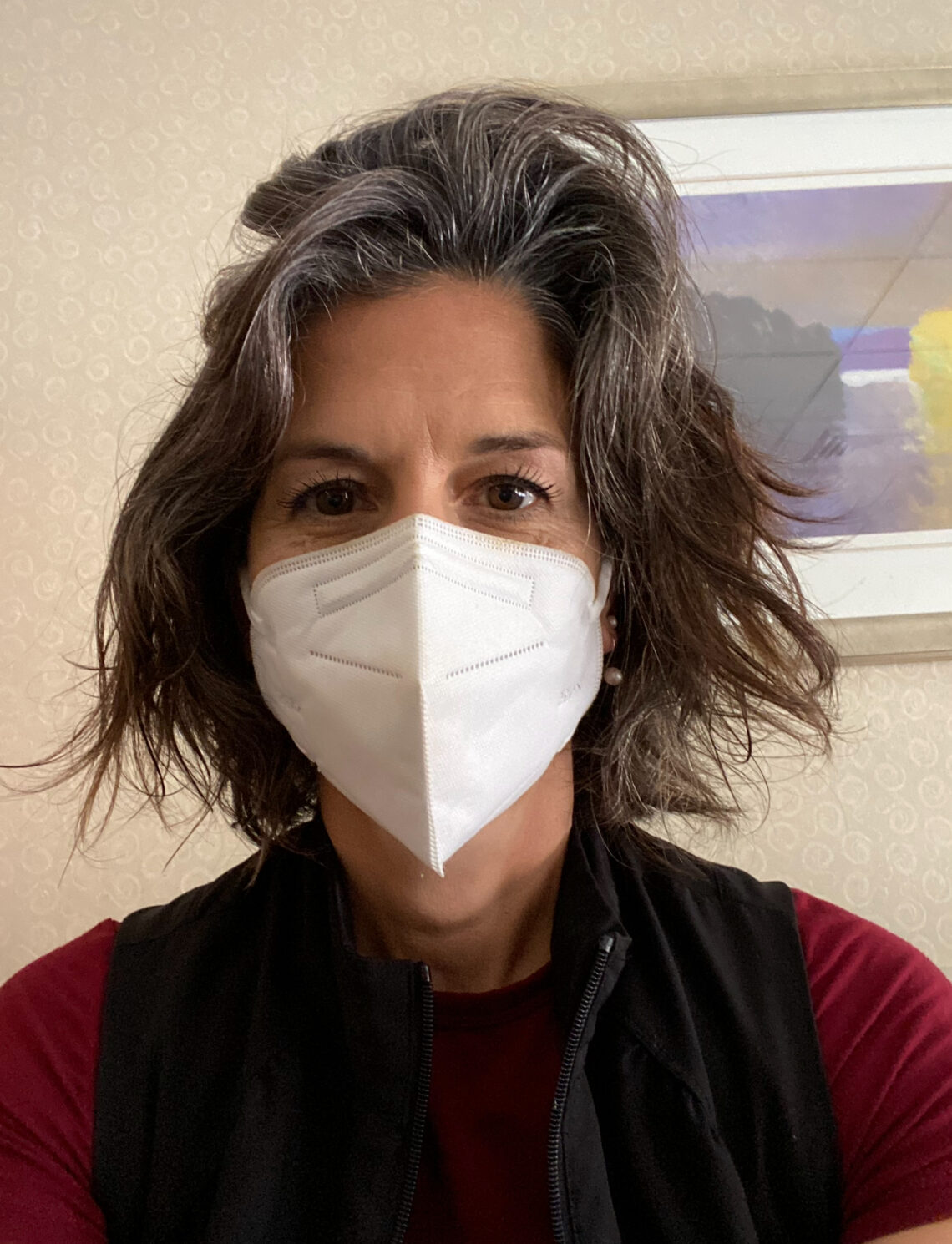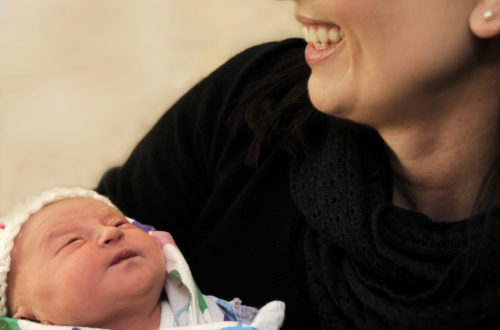
Marked
…by Fashion
6:30 am. Today I have a 2-hour drive to the nursing home where I am assigned. As I distractedly lock the front door and head to my car carrying my smoothie, the cold air seeps through my polyester scrubs. I try to walk so the material has minimal contact with my skin, preserving warmth. My car seat is freezing and my efforts are in vain. After a quick stop at Wawa for some coffee, and with a waft of Olivia Rodrigo notes trailing behind the car, I complete my mental checkmarks- keys, phone, iPad, smoothie, coffee.
At the home, I scan the patient list and see my first patient is a familiar one. Marcella has dementia that has progressed to extreme confusion and non-communication. She has a single room, and I can see from the doorway that she is sleeping on her bed. As I approach, I note that her pale, sunken face is made up like a clown. I touch her arm and say gently, “Marcella, it’s Dr. Higgins, here to look at your eyes.” She doesn’t open her eyes or wake, but I note she is breathing. I use my penlight to get a better view in the dim room. Marcella painted yellow nail polish on her eyelids as eyeshadow. She drew eyebrows with bright red lipstick. She has melted Hershey’s chocolate kisses on her lips. I look at her table to see the bottle on its side marking the surface with polish. I put the brush back in the jar, screw it on, and pocket it to give to her nurse. The nurse and I discuss this repeated issue. Marcella steals nail polish from the hair salon frequently. I describe the only protocol that I can think of to remove the nail polish- scrub with some type of oil or vaseline and follow with an eye-safe ointment. In line with our pattern, I will check on Marcella next month.
A Hispanic woman about 45 years old needs bifocals for the first time. We go through the testing to determine her prescription while the Hallmark channel mumbles in the background. I show Tamara a rough estimate of the prescription and she is pleased. I tell her that my technician will come back at the end of the day to help her pick a frame. Tamara says, “I want glasses like Jesus wore.” I stop and think. In my mind, I associate John Lennon with Jesus, so I say, “You mean small, round, metal ones?” She puts her arms out like a cross and yells, “NO, like JEEEESUS!” Startled, I pause to consider this. I say, “Ummmm, Jesus didn’t wear glasses.” She says, “Yes, he did.” I say, “No, he didn’t” while simultaneously thinking, “Why am I arguing about her messiah’s eyewear?” Tamara says, “I KNOW he did.” Quietly and “reasonably” I say, “Ben Franklin invented bifocals and Jesus was dead long before that.” Seriously, Maria, stop it. “But just describe to me what you think Jesus would wear.” Tamara says that he would wear large plastic purple frames. So that is what we give her.
…with love
My two favorite patients share a room. They are brothers, about 5 years apart in age. The younger man, Damaris, is fully mobile and has excellent vision. The older sibling, Omar, is blind and immobile, confined to his bed in the coveted position by the window. His brother insisted Omar be placed in that spot, even though he couldn’t see outside, so he could feel the sun. These 2 black men are always happy to see me and teach me something at every visit. Omar’s specialty is words, as he was a professor of literature. Damaris likes sports. The love between the brothers is apparent, as they rarely seek opportunities to be apart. Omar relies on Damaris and Damaris watches over Omar. Out of nowhere, well-spoken Omar turns his blind eyes in my direction and says, “When is the last time someone expressed that they love you?” Not waiting for an answer, he continues,” Well, I love you.” I am speechless, and my smiling, lighthearted mask that I put on for patients dissolves into silent tears brimming and escaping my eyes. I struggle to find my voice and composure. It’s not that I don’t have people who tell me they love me. My mom tells me at least weekly. My girlfriends and I have replaced “goodbye” with “I love you.” But Omar’s love is so pure and direct that it loosens something in me I keep tightly wrapped up. His blind eyes see my need for love and give it selflessly and wholeheartedly. As I try to speak, a gulped sob comes out instead. Finally, I manage a sincere, “I love you too.” And then, “Thank you. I must have needed that today.”
…with ink
Marci is next. Her room is filled with colorful stuffed animals. I can tell the length of a person’s stay in the nursing home by looking at how much stuff is present in the room. If it is sparse with just toiletries, they are short-term. If there are photos on the wall, stacked books, and many personal items jamming the space, they are a lifer. This seventy-year-old lady is spry and fit. She still walks independently, with no need for assistance. Marci is lounging on her bed wearing slippers, Marc Jacobs sweatpants, and a pink Marshalls hoodie. She weighs about 80 pounds. I repeat my usual introductory phrases, grab my penlight, and look at her pupils. I am surprised by three tear tattoos on her left cheek. In Marci’s case, aside from the tattoos, her eyes are unremarkable. She is witty, kind, and grateful for the exam. I finish the exam without a discussion of the tattoos. In the hall, google tells me that, in the same way as the decor of a patient’s room, these tattoos could signify the length of incarcerated time. But they could also signify a murderous past. If on the left side of the face, the tears may tally the number of people the wearer killed. If on the right side, they may represent a lost gang member or family member. Sometimes a rapist in prison will tattoo a tear on their victim’s face to “mark” them as their property. The true meaning behind the tear tattoos is known only by the wearer.
I hear voices rising at the nurse’s cart. There is a slight man about 60 years old arguing with his female nurse about taking his anti-anxiety drugs. As he wheels away from her in a huff, he says, “Bitch” under his breath but loud enough for me (and her) to hear. He stops in front of me as I am standing in his doorway. “Hey, Babe. Are you looking for me?” He is wearing a tee shirt with an illustration of a motorcycle in front of an undulating American flag on the chest, blue exercise shorts, and a red trucker hat marked with white lettering. I nod and move aside. He rolls past me into the room and spins around to face me. As I drag my cart towards him, I notice the tattoo on the inner thigh of his thin leg. It is a fish, positioned lengthwise, with its head facing the man’s knee. The fish head is graphically phallic and peeks out from under the hem of his short pants. It is surprisingly small. If you are going to permanently mark your body with a drawn representation of your manhood, wouldn’t you draw it larger? He notices me glancing at it. A sly grin crosses his face, accompanied by a slimy nod. Luckily, this exam is a quick follow-up, and I skedaddle as fast as possible.
The company for which I work assigns a technician to me. My tech is a stunning, dark-skinned Nigerian woman, who is quick-witted, multilingual, and intelligent. She finds patients before I do, connecting with them, sometimes translating for them, measuring their vision, checking their pupils, and dilating their eyes. We work in an efficient parallel, with me doing exams about 15 minutes behind her once the patients are dilated. On this day, she breaks our pattern and finds me in a hall she has already covered. She looks unsettled and I ask her what’s wrong. She tells me that our next patient is asleep in his room. When she touched his arm to wake him, she was appalled to find a four-inch Swastika tattoo on his pale forearm, purposely displayed with rolled-up sleeves. “Do I have to?” she asks me. “Swastika” translated from Sanskrit means “the mark of well-being.” Up to 1920, it was used as a symbol of good luck and peace. In 1920, the Nazi party adopted the swastika as its symbol and the sign evolved to symbolize their racially “pure” Aryan state. Today, the swastika is widely interpreted as a hate symbol that promotes white supremacy and genocide. “Absolutely not. I will see him.” My technician understood the language of hate and made the astute choice not to put herself in its path.
…with color
Lamark is asleep in his bed. He is a thin, wrinkled white man of about 90. The young black nurse outside of his room tells me he has had a rough night. I hear him continually calling her name. His vision is very poor, with only light perception to hand motion, and he struggles with night terrors. There is an ocular phenomenon called Charles Bonnet syndrome, where people with compromised vision will see hallucinations. It is a similar experience to phantom limb syndrome- seeing or feeling things that used to be there. I lean over him, looking at his closed lids with my penlight. I touch his arm and explain that I am looking at his eyes. He opens his eyes wide, looks directly at my face, and mistaking me for his nurse, exclaims, “Oh my God, you’re white?!?!” I hear the nurse behind me burst into peals of laughter. Both Lamark and I join her once he realizes the inadvertent swap of his nurse for the optometrist.
Many of my patient’s favorite pastime is coloring. I share this passion, filling in coloring books of mandalas with lusciously saturated color markers. Patients will often display their artwork. Some even have binders full of plastic sleeves protecting their pages. They will often show me every one. One woman has a coloring pen pal and draws on her mail correspondence, decorates envelopes, sends markered art, and receives colored pages back. I see an envelope on her table, postmarked from Hawaii, where her coloring pen pal lives. She sends me home with a picture of three cats, colored with crayons. It hangs on my refrigerator.
…for death
My next patient is lying on his back with his skeletal upper torso propped up on pillows. He is pale and frail with a sunken chest below his hospital gown. His head is tilted back and his mouth is open. He is sleeping deeply, but I hear a crackling, slow breath that I recognize as the “death rattle.” This labored breathing usually signifies that passing from this life is imminent. Not wanting to wake him, I whisper, “Hi. I am just checking on you.” Lifting his eyelids, I look at each pupil. They react slowly. As a means of connecting with my patients, I try to touch them and look them in the face before I leave their room. I place my hand on his arm, convey positive energy, and say, “I will see you again soon.” Because he is not responsive, I convene with the nurse, who tells me he was just put on hospice. Upon arrival at each home, I seek the Director of Nursing to review the patient list to remove anyone we should not examine. This includes short-term, COVID-positive, and hospice patients. Hospice patients receive only comfort care and eye exams do not fall in that category. I explain to the floor nurse that I wasn’t aware he was hospice. As I am making notes on my computer, she checks on him. After a few minutes, she comes back out, pulling his curtain closed behind her. She says evenly, like she is telling me his lunch order, “He has transitioned.” This term seems to be one recently adopted in the homes and always takes me an extra second to understand. “He died?” She nods and heads down the hall to get the funeral logistics in motion. I return to his bedside, wanting closure. The nurse had covered his face with a towel. I touch his foot gently and mentally release him from this world, leaving my last words stand as the last words he heard. “I will see you again soon.”
Mark’d
In the room next door is a patient named Mark. I say the usual introductory statements. He asks if I drove to work on a motorcycle. Confused, I respond, “No. Why?” He says, “Your hair is crazy.” I turn around to look at myself in the mirror above his sink. The mirror says, “Truth.” See the masked photo above and judge for yourself.
Trademark statements
Over the years, I have developed phrases I repeat to patients. While I do tests, I speak mindlessly, absently, primarily focusing on my job. I say, “Excellent, wonderful job, you’re so good at this test, great, that’s perfect, you rock.” I say these things regardless of their vision or test result. Sometimes patients will remark that I’m full of it and that they did not, in fact, do so well. I explain I am commenting that they’re doing a great job at the test, regardless of what the result is.
Bookmarked
I am standing in the hall, finishing a chart. A man in his ninth decade in a wheelchair rolls down the hall singing in an Elvis voice, “Like a river flows, surely to the sea, darling so it goes. Some things you know are meant to be.” As he gets closer to me, he directs his ballad in my direction with an outstretched arm. “Take my hand, take my whole life too.” He is so earnest and pure and such a terrible singer, I can’t help but join him. We sing together, “For I can’t help falling in love with you, for I can’t help falling in love with you.” When we finish our off-key duet, he asks if he can tell me a joke. “Always.” I say. He quips, “My friend Mark works in a library. (Pause pause pause) He’s a bookmark.” I laugh more heartily than is warranted. He appreciates the audience. He asks if I have a boyfriend. I say no. He giggles and asks if I would go on a date with him. I tell him he is way too young for me. We have another good laugh as he proceeds down the hall, leaving me smiling and shaking my head.
Finished with my list, I leave the facility to drive the two hours home with a permanent mark on my heart left by these colorful and beautiful characters.






28 Comments
Judy Quinn
Lovely story and well written. You do good things. You make a difference in people’s lives. Nice work.
marhiggins
Thanks, Judy! I appreciate your sweet comment! Thank you for reading!
Danielle Staresinic
Laughed ’til I cried and cried ’til I laughed!
Thank you for your words and reflexion/reflection!
marhiggins
Thank you, Danielle!! I keep trying to get to Pittsburgh and my trip keeps getting cancelled. Next time I make it, I would love to see you! Hope your family is well!
Karol Macfadden
Maria..I so enjoyed reading this…you are a rock star and I’d love for you to visit me should my final days be like the friends you “see”…..
marhiggins
Thank you for reading!! I appreciate your kind words. Thank you!
Dad
I enjoyed this story. Sounds like you had a memorable day. Love you.
marhiggins
Thanks Dad! Always something interesting! Love you.
Denise
As always, your blog is always filled with wit, laughter, shock and awe. Keep ’em coming!
marhiggins
Thanks so much, Denise!! I am so glad you liked it!
Gail Cassidy
You paint beautifully diverse individuals with words that readily evoke a reaction to each, almost as if I’ve met each one personally.
marhiggins
Thank you so much, Gail! I respect your opinion so much!
Shannon Thieroff
Beautiful. Thank you.
marhiggins
Thank you for reading! HAPPY BIRTHDAY!!
Joan Gower
Maria, you write so beautifully about your experiences in this Nursing Home. What an amazingly good person you are! Thank you for sharing these experiences.
marhiggins
Thanks!! Haha well I don’t know about “good” but I do love this job!
Jack
Always makes my day reading your blogs! We still miss you in Frederick, it’s never been the same. Stay healthy!
marhiggins
Thank you, Jack!! And I miss Frederick and all of its lovely residents! I get back a few times a year and it always brings me such happy memories. Hopefully our paths will cross on one of those trips!
Chris Hazley
Oh Maria, now I am “Marked” by reading such a lovely blog…such depth, love, humor, tenderness, and compassion. Thank you for sharing❤️
marhiggins
Your words are so kind, I appreciate you reading and commenting! Thanks! xoxo
Dale Hitchcock
Bless you, Maria!
marhiggins
Thanks, Dale! Miss you!
Anne Katona Linn
Love this cousin!! I miss visiting my mom in the nursing home and hearing all the adventures going on there!! You are such a blessing to these people
Love you!!
marhiggins
I loved loved loved when I was assigned to Aunt Betty’s home!!!!!! I miss that and her and you! Love you!
James Blakey
Enjoyable read. How did you decide upon the mar/marc/mark theme?
marhiggins
It started with the tattoo patients, marked with ink. Then my mind went to the man who passed, marked for death. And it spiralled from there… Thank you!
Troy Gavazzi
This post reminds me of the ZZ Top Song: Jesus left Chicago…… with glasses
marhiggins
Cool song! I never heard it before. Love it! Thanks for sharing!